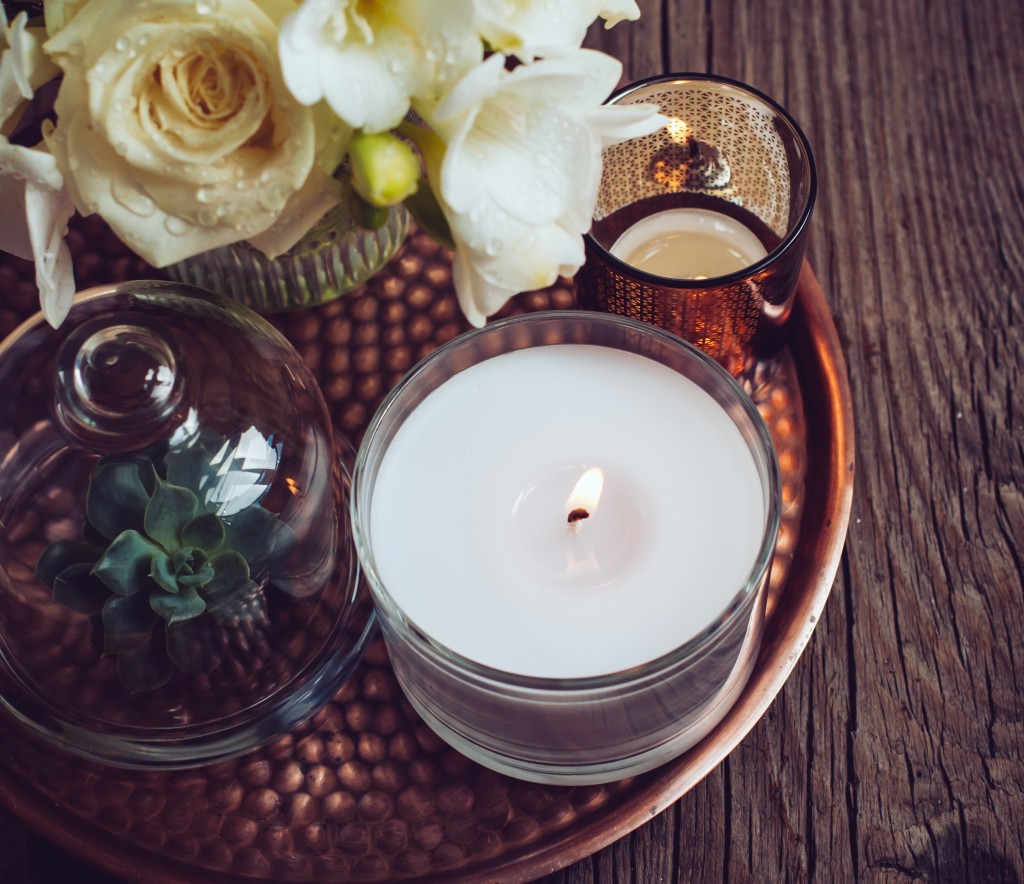
Although candles have been an integral part of our lives for millenium, the use of scented candles in our homes is a fairly recent development. These days the options for purchasing are basically limitless. From Etsy, to Amazon, to your local farmer’s market, there is an overwhelming amount to choose from.
However, not all candles are created equal. Do you know what goes into making a quality candle?
Stick with me!
Some YouTube videos would have you believe that making candles is as easy as grabbing an empty jar, adding a wick, melting some wax, adding fragrance and boom! you have a beautiful candle.
According to the National Fire Protection Association, from 2014 to 2018, U.S. fire departments responded to an average of 7,600 home fires started by candles per year. These fires caused an annual average of 81 civilian deaths and 677 civilian injuries, as well as $278 million in property damage. Read that again…that is per year.
In most cases, those fires are the result of people not practicing candle safety. As a candlemaker, I have to accept that no matter how much time and effort I put into teaching my customers how to handle their candles safely, a certain number of them will at some point forget to do so. (If you’d like to learn more about candle safety, check out Essential Candle Safety: Top 5 Tips For A Risk-Free Glow.)
I can’t prevent bad candle burning habits, but what I can do is make sure that the candle I sell is as safe as I can possibly make it. So what exactly goes into making a safe, high quality candle?
There are 6 elements that need to come together to make a really great candle:
- Vessel
- Wax
- Wick
- Fragrance
- Curing
- Testing
Vessel
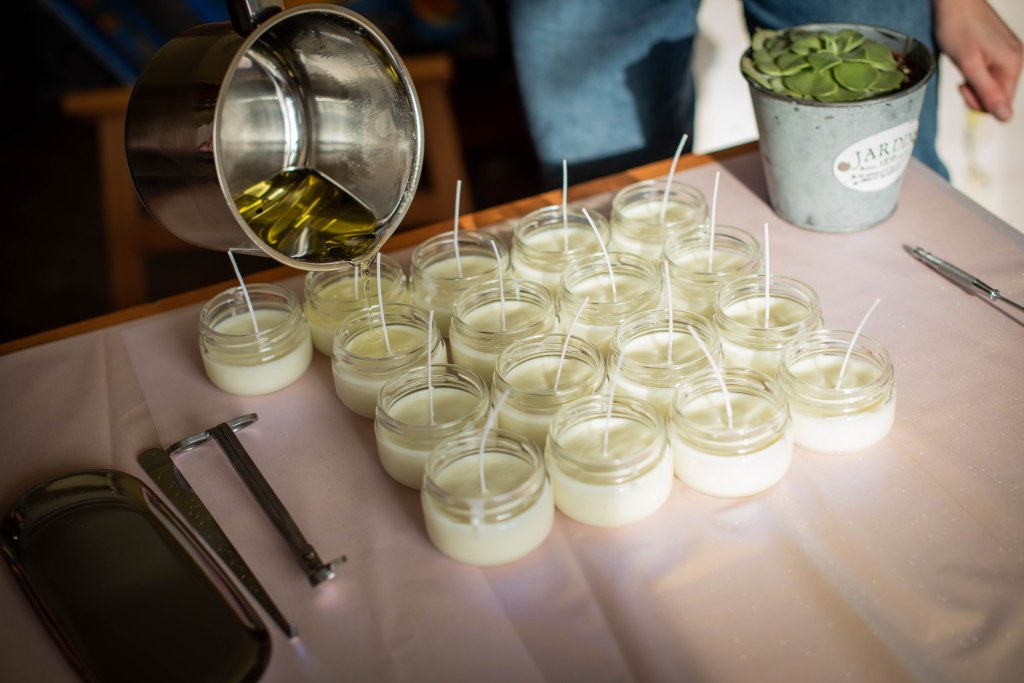
A properly made candle vessel will be designed to withstand high temperatures. Per the American Society for Testing and Materials (ASTM) standards (ASTM F2417-04 Section 4.4), the maximum allowable surface temperature is 140 °F for glass candle containers and 125 °F for metal candle containers.This means that any candle vessel must be able to withstand a minimum of those temperatures without cracking, breaking, or exploding.
That means that Mason or other name brand canning jars are okay, but those cute little pumpkin containers from the dollar store are not.” Please note that I said “name brand” canning jars…not cheap knockoffs from China.
Please be cautious when buying candles from a dollar store or other location where the prices are significantly lower. In order to make a profit on that candle, the manufacturer had to cut costs somewhere. The vessel used is the biggest factor in cost of a candle, and the one chosen may not be certified as candle safe. If you buy a cheap candle, please follow all recommended safety measures. You can find those in this post: Essential Candle Safety: Top 5 Tips For A Risk-Free Glow.
Wax
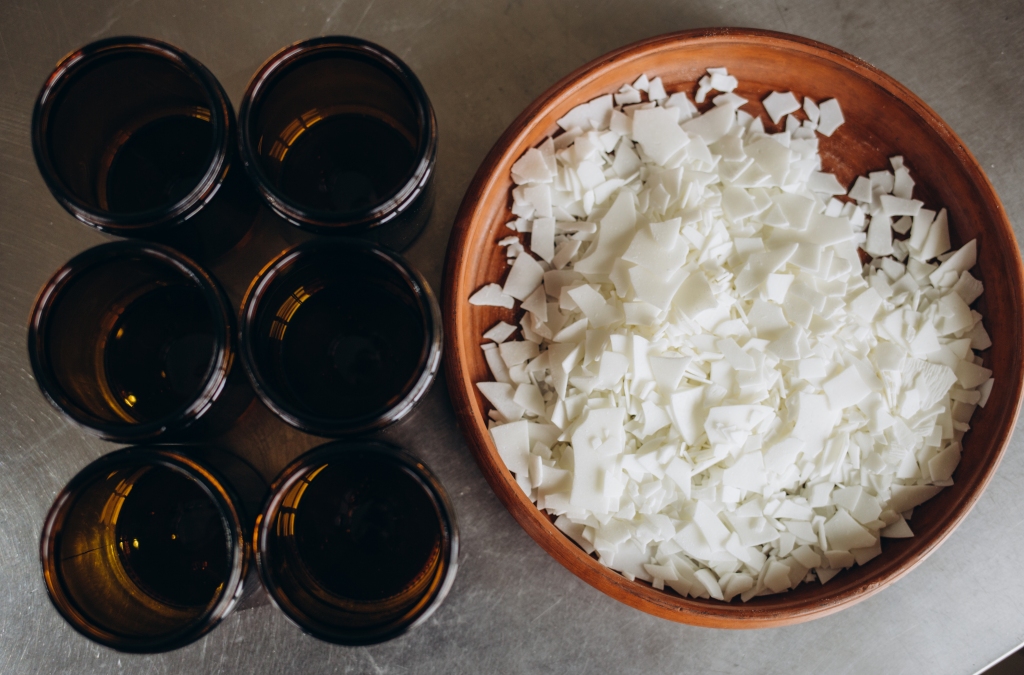
There are not many safety issues around wax choice. The main types you will encounter are paraffin, soy, coconut, beeswax, as well as blends of these types. All of these can make beautiful candles, but each has their own challenges.
- Paraffin wax makes a beautifully smooth, hard candle, but it is sourced from petroleum which many of us are trying to avoid. It also has a low melting point, which means the candles will burn more quickly than some of the alternatives.
- Soy wax is a very clean burning wax, but as it melts and cools it can form unattractive pockets on the top of the candle. It is also prone to developing lighter, frosted areas on the surface of the candle as it hardens.
- Coconut wax is a very clean burning wax that dries to a smooth finish, and you are unlikely to get unattractive pooling as the candle goes through the burn and cool cycle.
- Beeswax is also a good choice, as it is clean burning and makes a beautiful candle, however it is more expensive than the alternatives, which will be reflected in the price of the finished candle. It also is a naturally golden colour, so can only be left natural or dyed to dark colours. White or pastel colours are not possible in a beeswax candle.
Some candle makers use just one of the above waxes, while others will blend waxes to get the properties of both in their finished candle. At Fyr Candles, we have chosen to use a blended coconut apricot wax for our candles because it gives a clean, smooth finish every time, burns cleanly, and has an amazing hot and cold fragrance throw.
Wicks
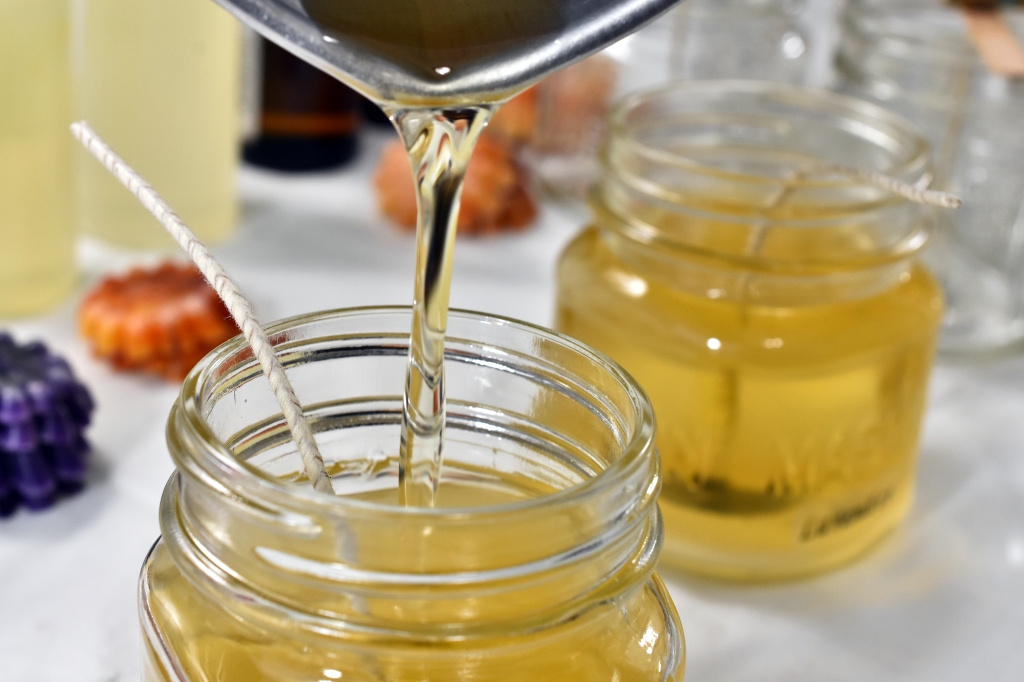
As with wax, there are numerous types of wicks that can be used: all cotton, paper core cotton, zinc core cotton, and crackling wood are the most common. How the wick performs in the candle will vary according to the diameter of the vessel, the wax used, and the amount of fragrance oil added. It’s not the burning wick that keeps the candle lit, it is the wax that is being drawn up into the wax. This is why thorough testing of the finished candles is essential, to ensure that the candle you take home performs beautifully every time you light it.
Fragrance
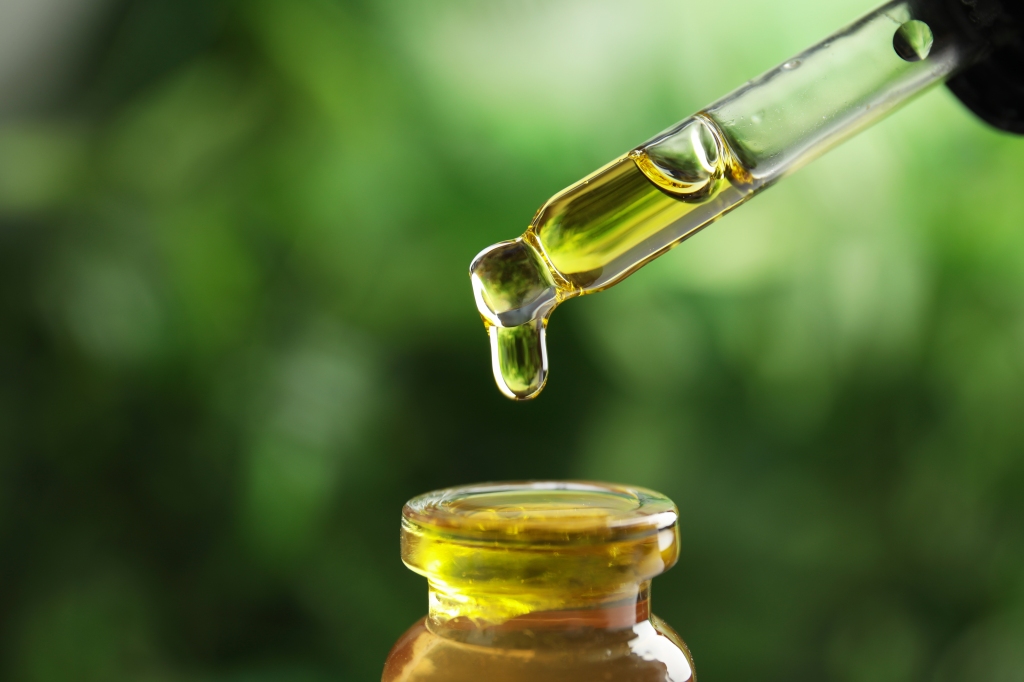
Not every fragrance oil or essential oil will perform well in a candle, and the amount used will vary according to the wax used. A scented candle has a cold throw, which describes how strong the fragrance is when the candle is unlit, and a hot throw which is how much the fragrance spreads through the environment as it burns. Some fragrances perform well in one, but not the other. Also, some fragrances do not draw well up the wick, causing uneven burning, flickering, and soot.
Curing
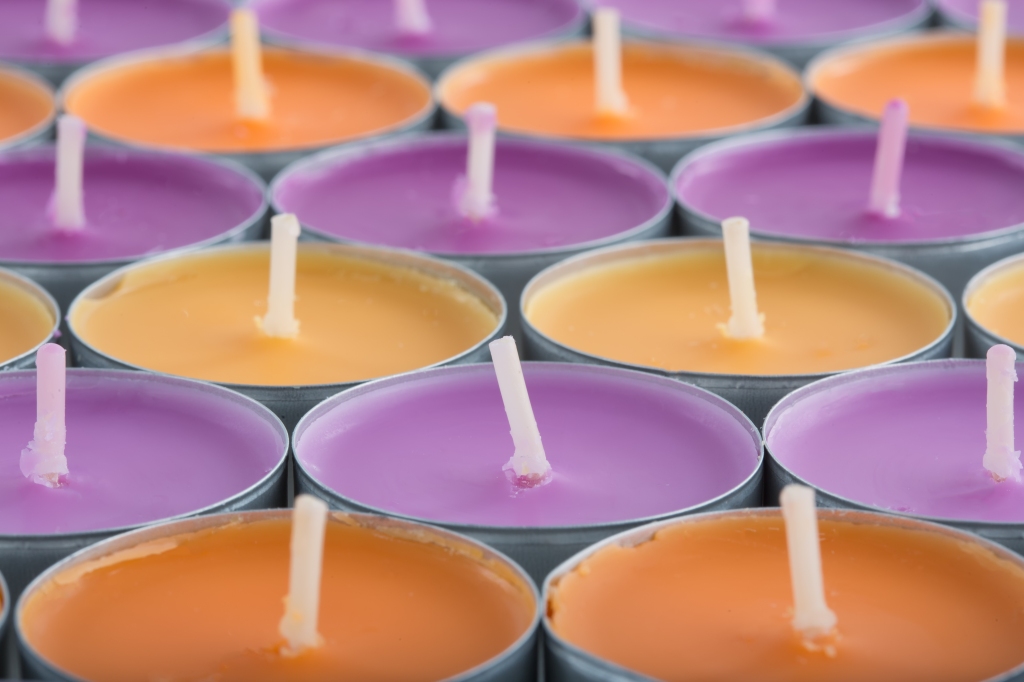
This is one of the steps that people who are new to candle making often skip…curing the candles. Although the candle appears to be finished once it has cooled and hardened, in reality the reaction between the wax and the fragrance is ongoing, and depending on the wax used, can take up to two weeks. Although the candle appears to be a solid once it has cooled, there are actually still small spaces between the wax molecules, and during this curing time, the fragrance oil continues to spread throughout the wax. This ensures that the fragrance lasts for the full life of the candle. Some candle makers will sell a candle as soon as it has hardened, assuming that the customer won’t be burning it for awhile, allowing it to cure fully.
At Fyr Candles we assume our customer is going to light that candle the same day they take it home, so we don’t sell any candle that hasn’t been cured for a full two weeks, which is the amount of time required by coconut apricot wax.
Testing
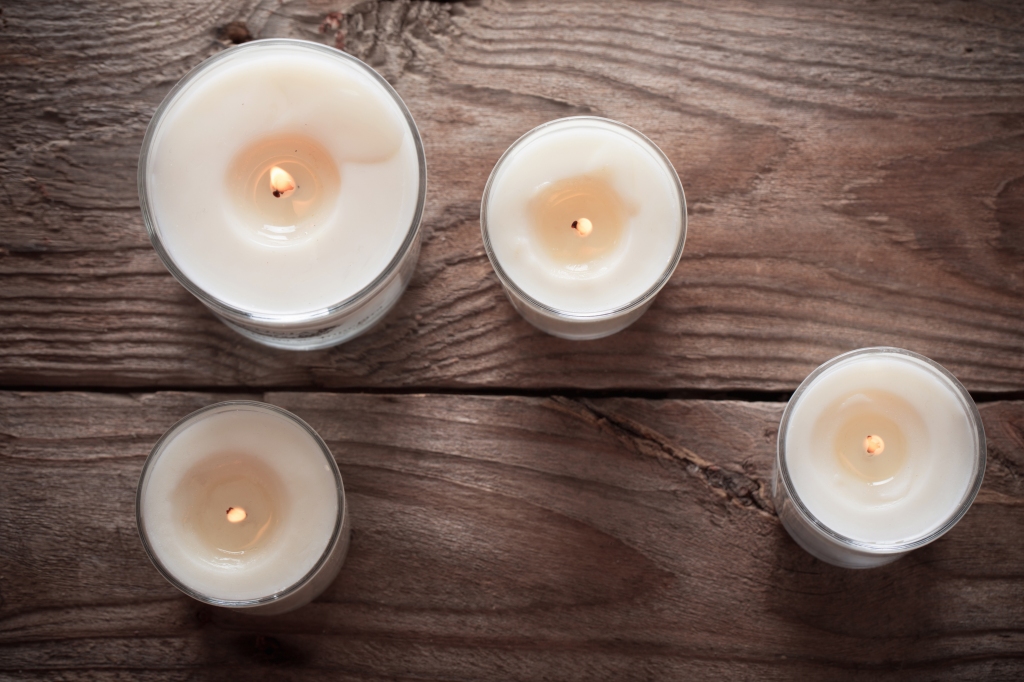
With so many variables that go into making a quality candle, the most important part of the process is testing the finished product, also known as burn testing. It’s not enough to test one candle and call it a day.
Every combination of vessel/wax/wick/fragrance load has to be tested before sale. So even if we’ve made, tested, and sold hundreds of candles using the same vessel/wick/wax combination, if we change the fragrance it is a brand new candle, and we have to conduct a burn test on that candle. If we decide the fragrance isn’t strong enough in one of our candles and want to increase the amount we use…you guessed it…another burn test.
As you can see, there are no shortcuts to a quality candle, and every step taken is to ensure that the candle you take home is safe, long burning, and fragrant. The rest is up to you. Please follow safe burning guidelines every time you light your candle.
Be candle safe.

Leave a comment